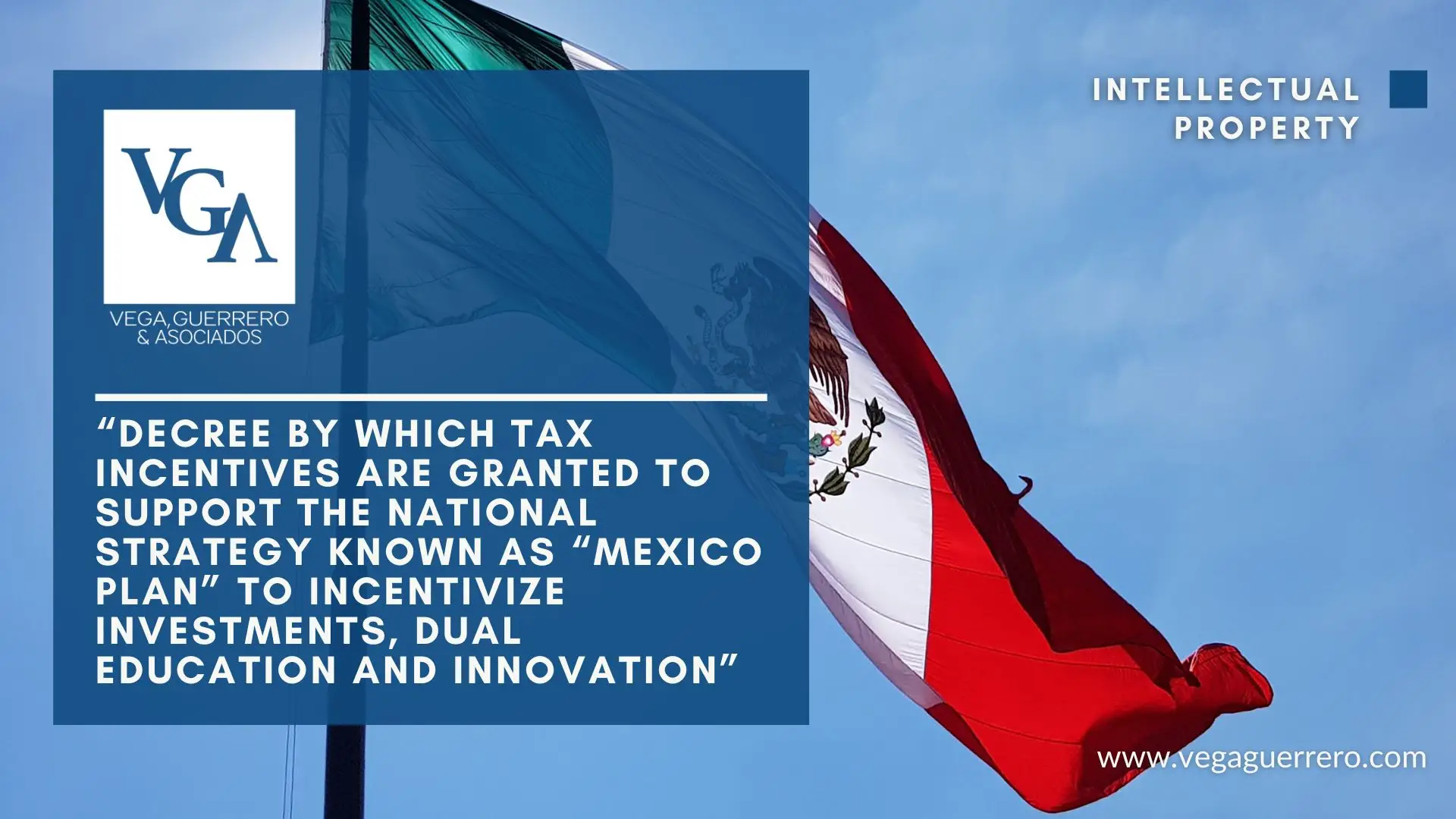By Marco Tena
The Decree aims to position Mexico as a global leader in investment and innovation by granting tax incentives to companies operating in the country through 2030.
Mexico City, January 21, 2025: On January 21, 2025, the Official Journal published the “Decree by which tax incentives are granted to support the national strategy known as “Mexico Plan” to incentivize investments, dual education and innovation” (the “Decree”). The Decree is part of President Claudia Sheinbaum’s Mexico Plan strategy to incentivize investment, dual education, and innovation by granting tax incentives in relation to deductions over costs associated to fixed assets, patents, and certifications.
The Decree represents a significant opportunity for businesses and inventors to strengthen their intellectual property portfolios. The Decree will apply to companies with total revenue of up to $100,000,000.00 pesos (one hundred billion pesos) (equivalent to approximately $4,867,530.86 USD at current exchange rate) who are up to date and in compliance with tax obligations, and that have presented i) investment project, ii) collaboration agreement entered into with the Ministry of Education or iii) an investment project to develop an invention or to obtain an initial certification before tax authorities for approval. The tax incentive consists of tax deductions to be applied over the company’s fiscal utility.
In relation to fixed assets under Article Second, the Decree introduces immediate tax deductions for investments in new equipment and infrastructure. Notably, higher deductions—ranging from 56% to 89%—are granted to industries involved in technology, research, and development, which are split into two periods, 2025-2026 and 2027-2030. We highlight the ability to deduct over cost in this first period the following:
- For dies, punches, molds, templates, and tooling (89%)
- Computers, servers, printers, optic readers, graphic cards, barcode scanners, digitalizes, external storage units (88%)
- Airplanes used for aero-fumigation (86%)
- Electric Cars or Buses (86%)
- Central telephone equipment for technology different to calls (86%)
- Bicycles – conventional and electric (86%)
In relation to assets not listed in the first section of Article Second, deductions are industry-specific, where we highlight the ability to deduct assets not listed at a rate of 80% or over for the first period in the following industries:
- Manufacture and assembling of magnetic components for hard drives and electronic cards for the computer industry (91%)80%)
- Destined directly for the research of new products or development of new technology within the country (89%)
- Construction, agriculture, livestock, forestry, and fishing (86%)
- Restaurants (83%)
- Air transport and telecommunications (80%)
Article Third establishes rules for taxpayers opting for the benefits under Article First, including adjusting the original investment amount for inflation, recognizing taxable gains from asset sales, and deducting losses when assets are sold, lost, or become unusable. Specific deduction rates apply based on asset type and investment period (2025–2030).
In relation to dual education and innovation, Article Fourth sets forth the ability to deduct an additional 25% of the additional costs incurred for training a worker or by concept of innovation, understood as the positive difference that the company paid on average for the last three fiscal years for the same concept. Expenses related to innovation are those associated to investment projects to develop an invention, to obtain its patents, or those development projects to obtain initial certifications that will allow companies to insert themselves into local and regional supply chains.
Its authorization is contingent and is scrutinized by the Evaluation Committee created by the Decree, and handled by the Mexican Internal Revenue Service (“SAT”). The total fiscal incentives authorized under the Decree will amount to up to 30 billion pesos, allocated from its effective date until September 30, 2030. Of this, 28.5 billion pesos are designated for the incentive outlined in relation to fixed assets, and 1.5 billion pesos for the incentive related to dual training and innovation.
Taxpayers who apply the incentives but fail to meet the requirements must repay the taxes, along with adjustments and surcharges, and the fiscal incentives granted will be revoked.
Para más información sobre la aplicación del Decreto, no dudes en contactarnos en Vega Guerrero Asociados.




